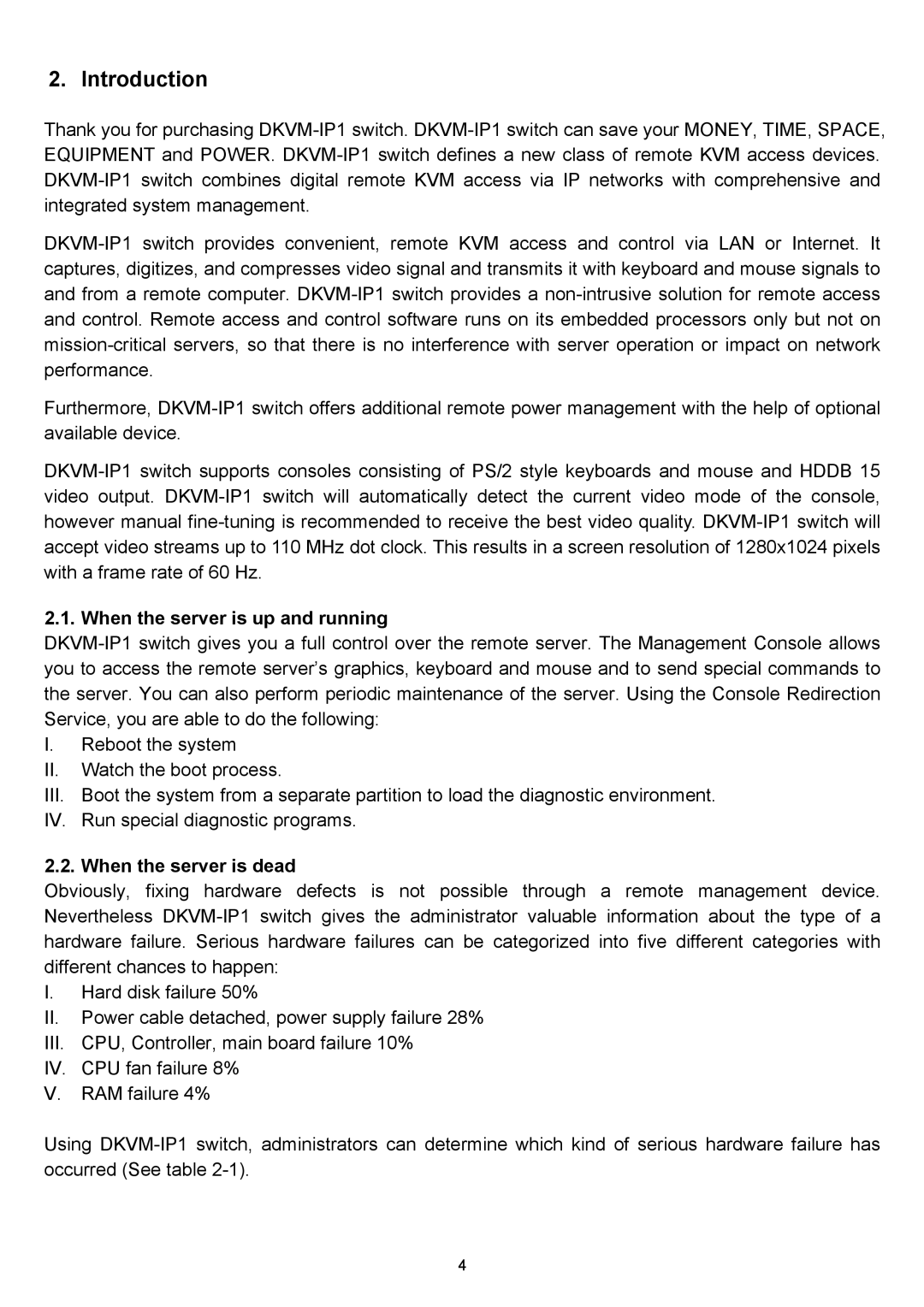2. Introduction
Thank you for purchasing DKVM-IP1 switch. DKVM-IP1 switch can save your MONEY, TIME, SPACE, EQUIPMENT and POWER. DKVM-IP1 switch defines a new class of remote KVM access devices. DKVM-IP1 switch combines digital remote KVM access via IP networks with comprehensive and integrated system management.
DKVM-IP1 switch provides convenient, remote KVM access and control via LAN or Internet. It captures, digitizes, and compresses video signal and transmits it with keyboard and mouse signals to and from a remote computer. DKVM-IP1 switch provides a non-intrusive solution for remote access and control. Remote access and control software runs on its embedded processors only but not on mission-critical servers, so that there is no interference with server operation or impact on network performance.
Furthermore, DKVM-IP1 switch offers additional remote power management with the help of optional available device.
DKVM-IP1 switch supports consoles consisting of PS/2 style keyboards and mouse and HDDB 15 video output. DKVM-IP1 switch will automatically detect the current video mode of the console, however manual fine-tuning is recommended to receive the best video quality. DKVM-IP1 switch will accept video streams up to 110 MHz dot clock. This results in a screen resolution of 1280x1024 pixels with a frame rate of 60 Hz.
2.1. When the server is up and running
DKVM-IP1 switch gives you a full control over the remote server. The Management Console allows you to access the remote server’s graphics, keyboard and mouse and to send special commands to the server. You can also perform periodic maintenance of the server. Using the Console Redirection Service, you are able to do the following:
I.Reboot the system
II.Watch the boot process.
III.Boot the system from a separate partition to load the diagnostic environment.
IV. Run special diagnostic programs.
2.2. When the server is dead
Obviously, fixing hardware defects is not possible through a remote management device. Nevertheless DKVM-IP1 switch gives the administrator valuable information about the type of a hardware failure. Serious hardware failures can be categorized into five different categories with different chances to happen:
I.Hard disk failure 50%
II.Power cable detached, power supply failure 28%
III.CPU, Controller, main board failure 10% IV. CPU fan failure 8%
V.RAM failure 4%
Using DKVM-IP1 switch, administrators can determine which kind of serious hardware failure has occurred (See table 2-1).
